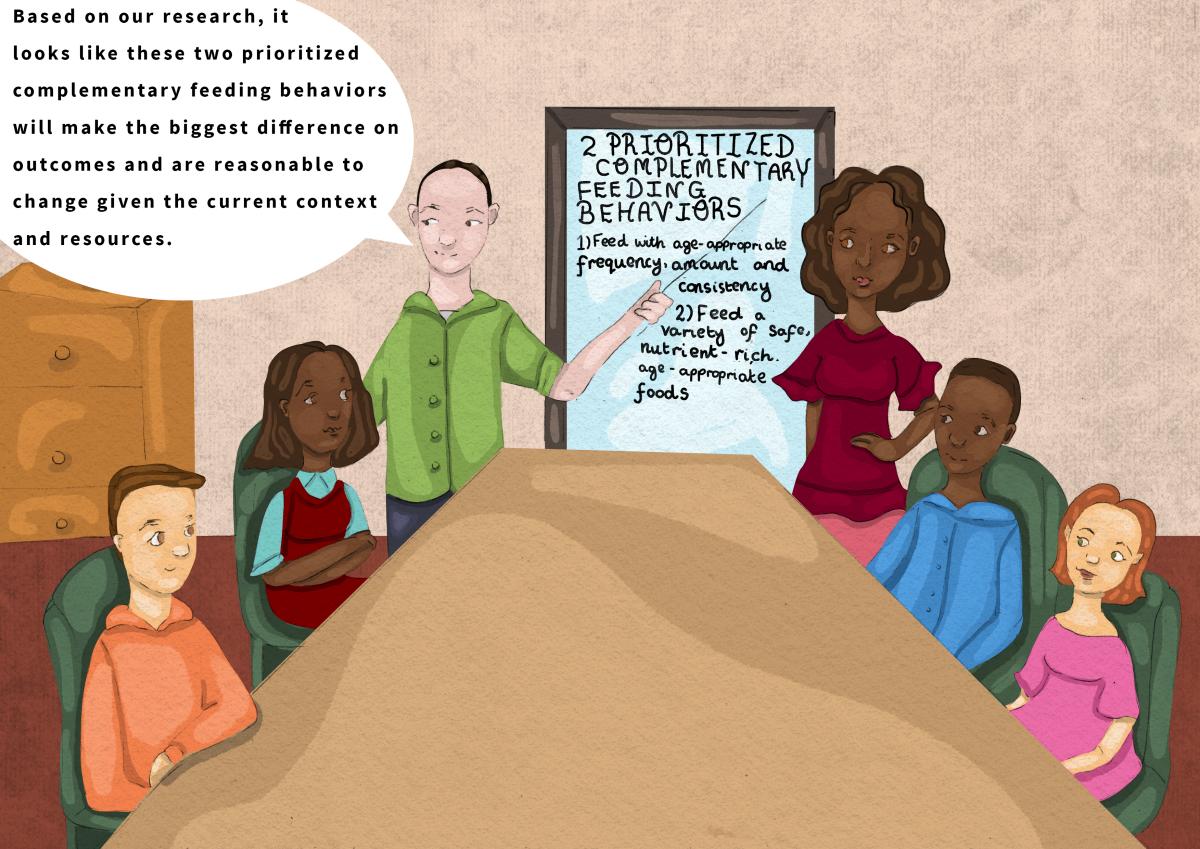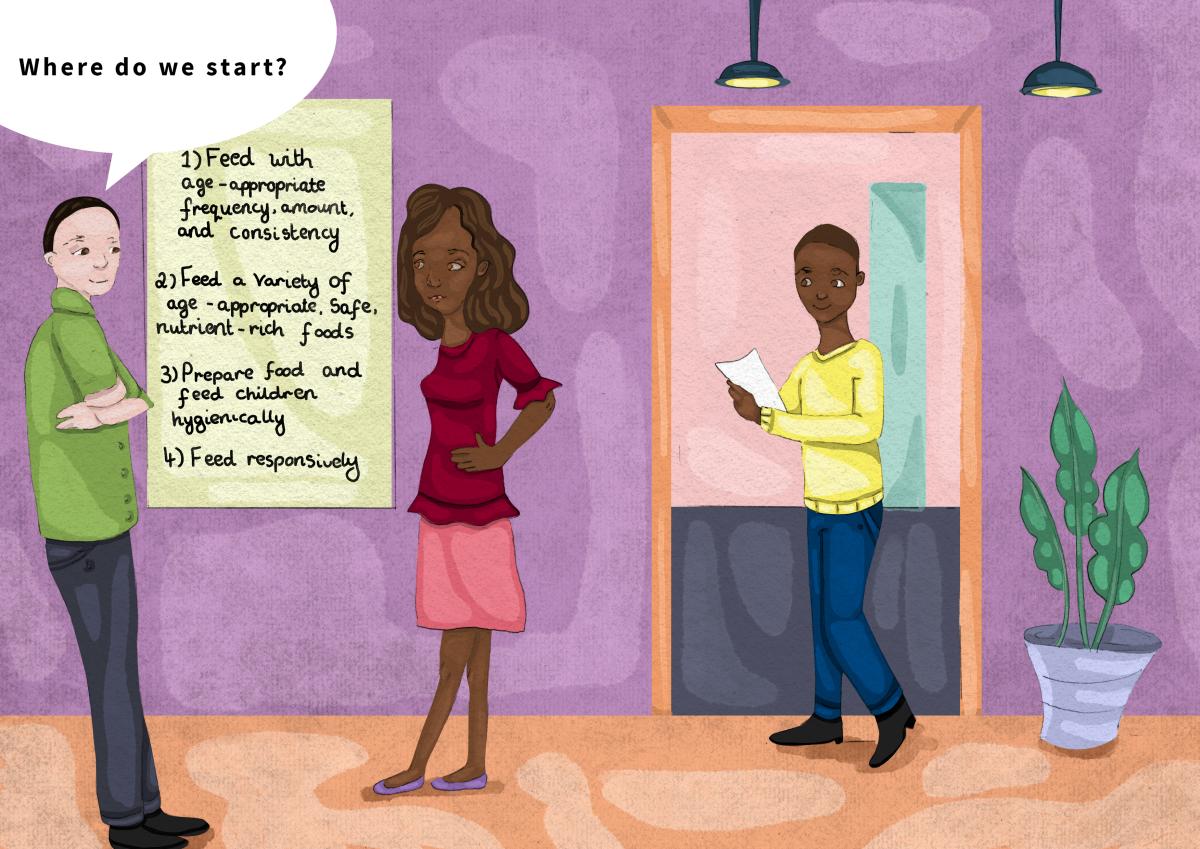Prioritizing behaviors is essential for high-quality SBC programming. Programs that try to change many behaviors are unlikely to achieve quality because their attention is spread thinly across many participants and activities, and they are less likely to sustain change.
Prioritization enables programs to—
- identify and address behaviors that will make the biggest nutrition impact, are the most suitable to the context, and are feasible to change
- efficiently manage time and resources because of the narrowed scope
- achieve and sustain impact.
Use worksheet 1.1 and worksheet 1.2 to work through the steps below. The Prioritizing Multi-Sectoral Nutrition Behaviors tool is also a guide for this module.
1.1 Determine the behavior prevalence and gap for the context.
Note age differences, such as 9–11 months, because feeding practices often vary by age, as the child grows.
For example, in Mozambique, feeding frequency is good for children 6–11 months, but dietary diversity is low. Children over 12 months have the opposite issue, when diversity increases as they begin to eat family food, but frequency is inadequate (Ministério da Saúde, Governo de Moçambique 2018).
1.2 Assess the potential to impact results.
This potential could be based on the extent of the behavior gap and the importance of the behavior to the desired outcome.
1.3 Assess the potential ability to change.
To assess this ability, answer the question: Given the available resources, services, and constraints in the program area (e.g., food availability), does existing research show that the behavior can shift?
1.4 Narrow the behaviors and determine program and policy fit.
Determine program “fit” based on the program’s time, competencies, and resources needed to promote the practice. Note whether each behavior is a national or local policy.







